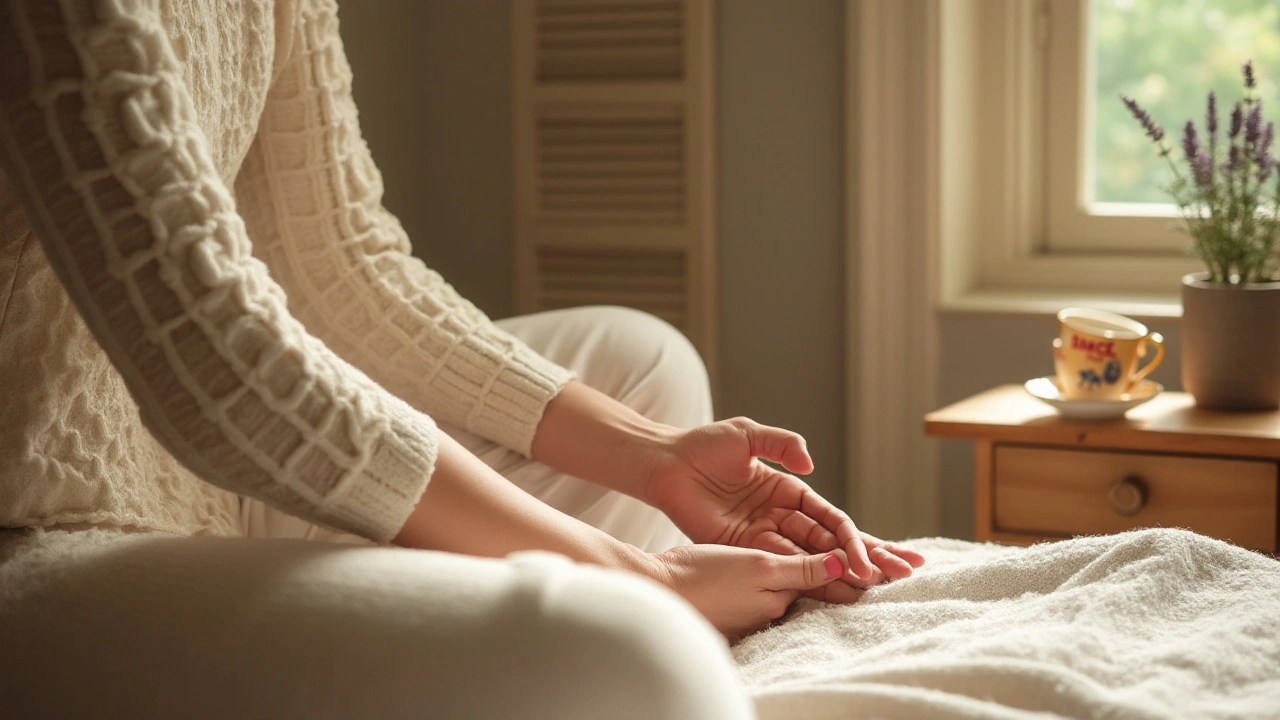Sleep Techniques That Actually Help: Massage, Touch and Small Routines
Want better sleep tonight without pills? Small, focused touch and simple bodywork often beat long, complicated routines. Try five minutes of the right moves before bed and you may lie down calmer, breathe easier, and drop into sleep faster. Below are clear, practical techniques drawn from massage and movement methods you can use now.
Simple routines to try tonight
Acupressure for sleep: press the inner wrist point (P6) or the area between your eyebrows for 30–60 seconds each side. Press firmly but not painful. These points calm the nervous system and help you unwind.
Trigger point release: find tender spots around the neck and base of the skull. Apply steady pressure for 20–30 seconds, then release. Repeat once or twice. This eases tension that keeps you awake.
Warm stone or heat: a warm compress on the lower back, chest, or feet for 5–10 minutes relaxes muscles and signals your body it’s time to rest. If you don’t have a stone, use a microwavable heat pack or hot towel.
Breath + gentle movement (Feldenkrais style): sit or lie down and breathe slowly for one minute. Then sweep your arms overhead slowly 5 times while keeping the breath even. Move small and easy—tiny, familiar movements calm the brain and reduce sleep anxiety.
Which technique fits you?
If you feel wired and tense, start with breath and neck trigger release. If you feel restless and can’t quiet your mind, try acupressure and slow arm or leg sweeps. If your body is achy, use heat and gentle hands-on massage to ease soreness before bed.
Pick one method, do it night after night for a week, then add another. Combining acupressure with breath work and a short self-massage works well for many people. Keep sessions short—3–10 minutes is enough.
Practical tips: do the routine in low light, sit or lie in a comfy spot, and avoid screens for 15 minutes afterward. Use pillow support for your neck and knees so your muscles can relax. If a technique bothers you, stop and try a gentler option.
When to see a pro: if pain or severe insomnia keeps you up, look for a qualified therapist trained in techniques like Amma, Feldenkrais, Ortho-Bionomy, or trigger-point therapy. A few guided sessions can speed results and teach you safer ways to self-treat.
Try one short routine tonight. Be consistent for a week. Small, practical bodywork and touch often give the sleep boost people expect from long, complicated plans—without the fuss.

Discovering Acupressure Techniques to Combat Insomnia Effectively
Acupressure has been used for centuries to improve sleep quality and relieve insomnia through natural pressure points in the body. By understanding specific points and techniques, individuals can promote relaxation and enhance restfulness. This approach is especially beneficial for those seeking alternatives to medication and looking to harness the body’s natural healing abilities. Simple exercises can be performed anywhere, making them an accessible solution for sleepless nights.
Categories
- Health and Wellness (148)
- Alternative Therapies (86)
- Massage Therapy (40)
- Travel and Culture (15)
- Beauty and Skincare (9)
- Holistic Health (8)
- Health and Fitness (5)
- Spirituality (5)
- Other (2)
- Personal Development (2)
Popular Articles



